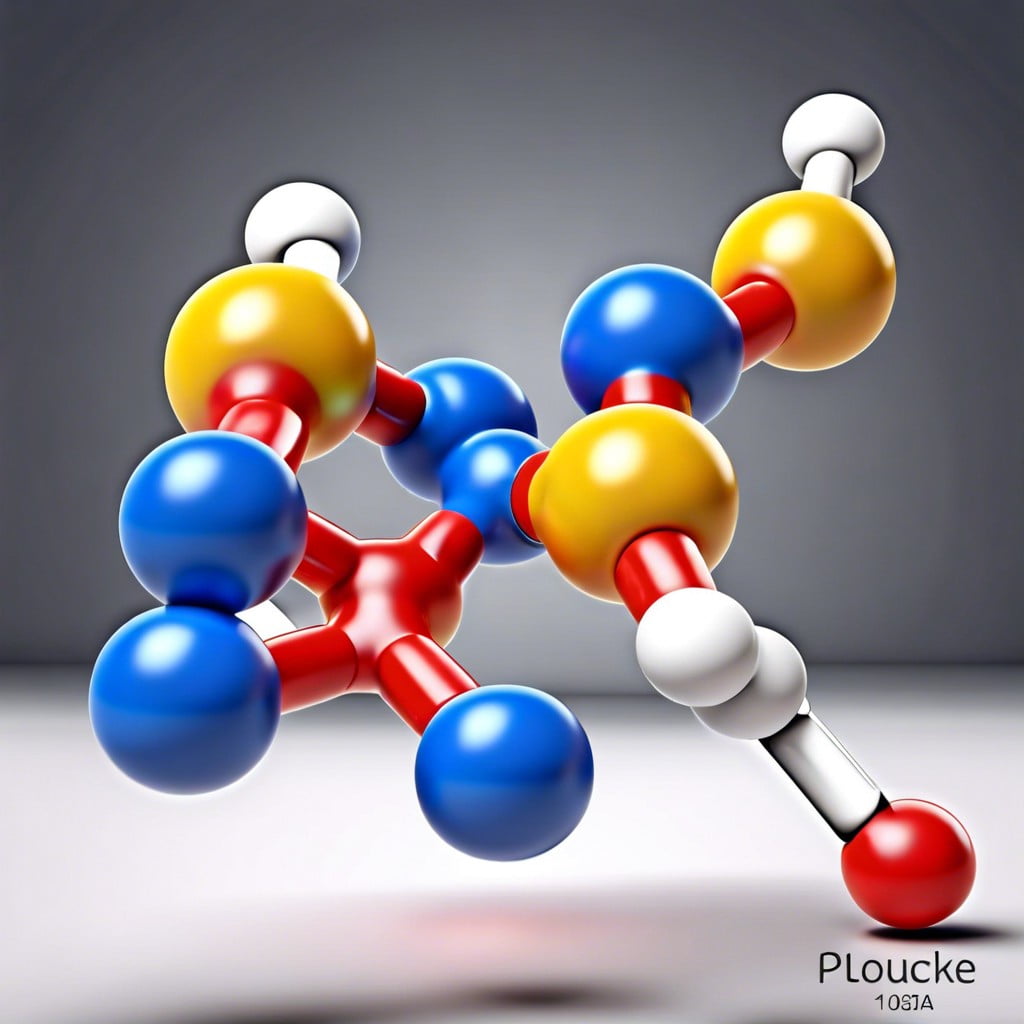In this concise guide, we’ll set the record straight on whether glucose can be classified as a polymer and its potential applications in construction.
Key takeaways:
- Polymers are large molecules made up of repeating subunits.
- Glucose is a monosaccharide, not a polymer.
- Glycogen is a glucose polymer found in animals.
- Cellulose is a plant-based glucose polymer with unique properties.
- Glucose-based polymers have various applications in medicine, food, and more.
Definition of Polymers

Polymers are large molecules composed of repeating subunits, known as monomers, linked together like a chain.
These chains can vary in length, ranging from a few repeating units to thousands, giving polymers diverse properties and a wide range of applications.
Their structure can be linear, branched, or even cross-linked, where chains are connected by bonds.
Polymers exhibit a variety of characteristics depending on their composition and structure.
Some are flexible and elastic, like rubber, while others are strong and rigid, such as plastics used in construction.
The versatility of polymers comes from their molecular arrangements.
Adjusting the type, length, and configuration of the polymer chain can tailor materials for specific needs—whether for insulation, structural components, or finishes in construction projects.
Glucose As a Monosaccharide
Glucose is the simplest form of sugar and is classified as a monosaccharide, which means “single sugar”. Unlike polymers, which are made up of long chains of repeating units, monosaccharides are single molecules with a basic structure that cannot be broken down further by simple water-based reactions.
Here are key points about glucose:
- It has the chemical formula C6H12O6.
- It is a building block of more complex carbohydrates, such as starch and cellulose.
- Its molecular structure features a ring form, which is common among many sugars.
- In living organisms, it plays a crucial role as an energy source and metabolic intermediate.
- Due to its single-molecule structure, it is not considered a polymer.
Glycogen: The Glucose Polymer in Animals
Glycogen acts as animals’ equivalent to a rechargeable battery, storing energy efficiently for later use. This multi-branched polymer is composed of glucose units linked together in a specific fashion – a linear chain with occasional branch points.
Found predominantly in the liver and muscles, it is akin to a reserve tank of fuel that the body taps into during fasting or increased physical activity.
Upon need, an enzyme called glycogen phosphorylase breaks down glycogen back into glucose. This glucose then enters the bloodstream, providing a quick energy boost to meet the body’s immediate requirements.
While humans and other animals cannot directly digest plant-based cellulose, they are adept at synthesizing and breaking down glycogen, showcasing nature’s remarkable ability to tailor glucose polymers to the dietary needs of different organisms.
Cellulose: The Plant-Based Glucose Polymer
Cellulose is nature’s most abundant organic polymer, primarily found in the cell walls of plants. It’s composed of glucose units linked by β-1,4-glycosidic bonds. These bonds differ from the α-linkages found in glycogen and starch, making cellulose a unique material. Its structure gives it rigidity and high tensile strength, which are crucial for maintaining the structural integrity of plant cells.
One of the interesting characteristics of cellulose is that it’s not digestible by humans due to our lack of the necessary enzyme to break down the β-1,4-glycosidic linkage. However, some animals, like cows and termites, can digest cellulose because they have symbiotic microorganisms with the requisite enzymes in their digestive systems.
In construction, cellulose is valuable because it can be processed into materials like cellulose insulation. This eco-friendly insulation is made from recycled paper, primarily newspaper, treated with fire retardants and offers excellent thermal performance. Furthermore, cellulose nanocrystals and nanofibrils extracted from wood fibers have gained significant interest for reinforcing biodegradable polymers, promising a future of green composites.
Glucose Polymers and Other Uses
While glycogen and cellulose are natural glucose polymers with essential biological roles, scientists have engineered other glucose-based polymers for various applications.
Medical Field: Dextran, a complex branched glucose polymer, functions in medical treatments as a volume expander in intravenous fluids and improves blood flow during surgery.
Food Industry: Glucose polymers such as maltodextrins are used as thickeners, flavor carriers, and to manage the texture of food products.
Biodegradable Materials: Research continues into developing biodegradable plastics from glucose polymers, providing more eco-friendly alternatives to traditional plastics.
Pharmaceuticals: Glucose derivatives are involved in the controlled release of drugs, playing a crucial role in creating medication delivery systems that are both efficient and safe.
By manipulating the molecular structure of glucose, these man-made polymers serve diverse functions that impact many facets of the modern world.
FAQ
Is C6H12O6 a polymer?
No, C6H12O6 is not a polymer; it is a monomer known as glucose.
Is glycogen a polymer or not?
Yes, glycogen is a polymer, specifically a large, branched polymer of glucose residues.
Is a sugar a polymer?
No, a simple sugar is not a polymer; it is a monomer, which serves as the building block for polymers.
Is glucose a polymer of starch True or false?
False, starch is a polymer of glucose, not the other way around.
Are monosaccharides such as glucose considered polymers?
No, monosaccharides like glucose are not considered polymers; they are simple sugars and building blocks of polymers like polysaccharides.
How does cellulose, a polymer, differ from a glucose molecule in terms of structure?
Cellulose, a polymer, is a linear chain of several hundred to many thousands of β(1→4) linked D-glucose units, whereas a glucose molecule is a single monosaccharide with a structure of C6H12O6.
Can glucose be part of a polymer chain, and if so, in what way?
Yes, glucose can be part of a polymer chain, essentially serving as the repeat unit in naturally occurring polysaccharides like cellulose and starch.
Recap




